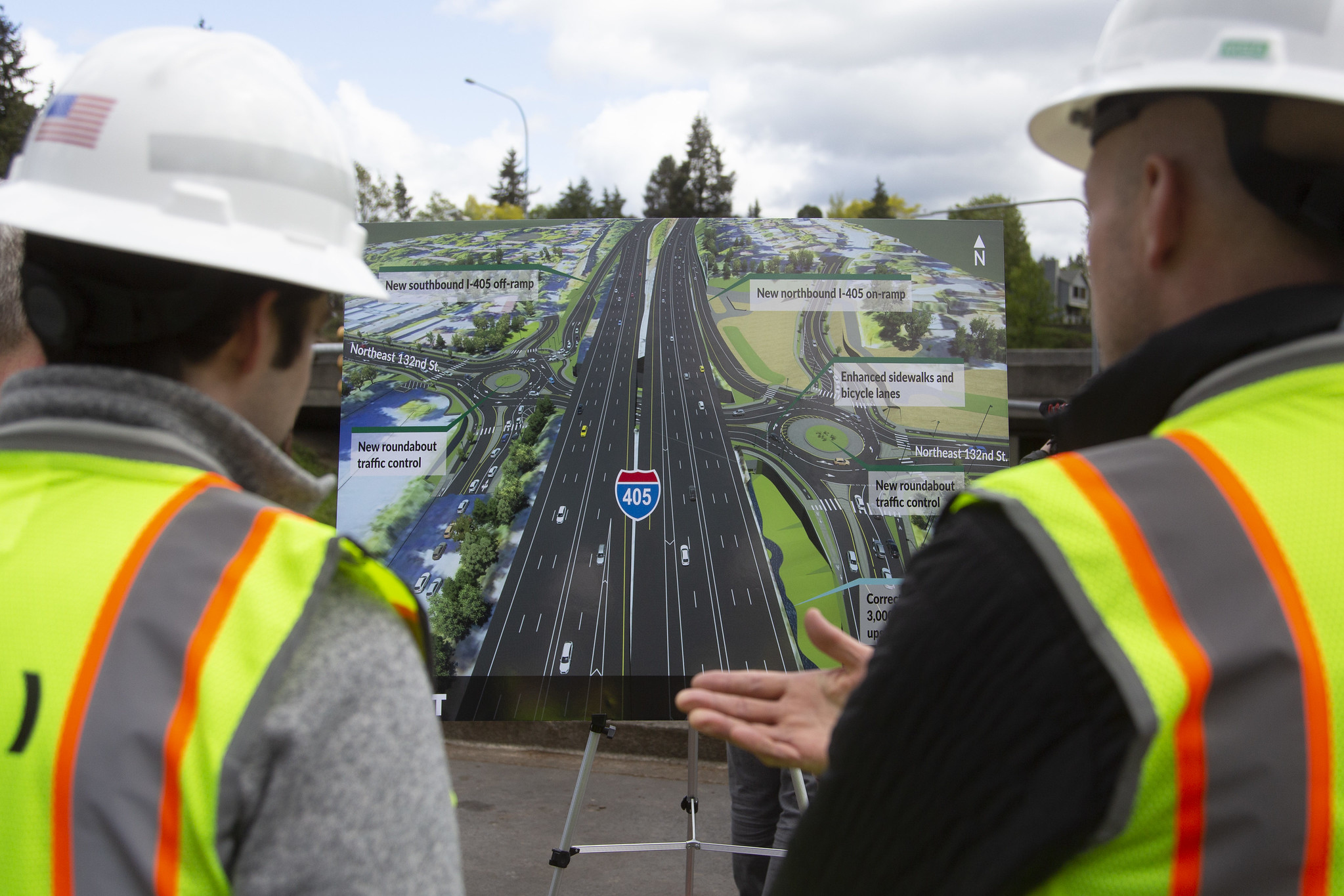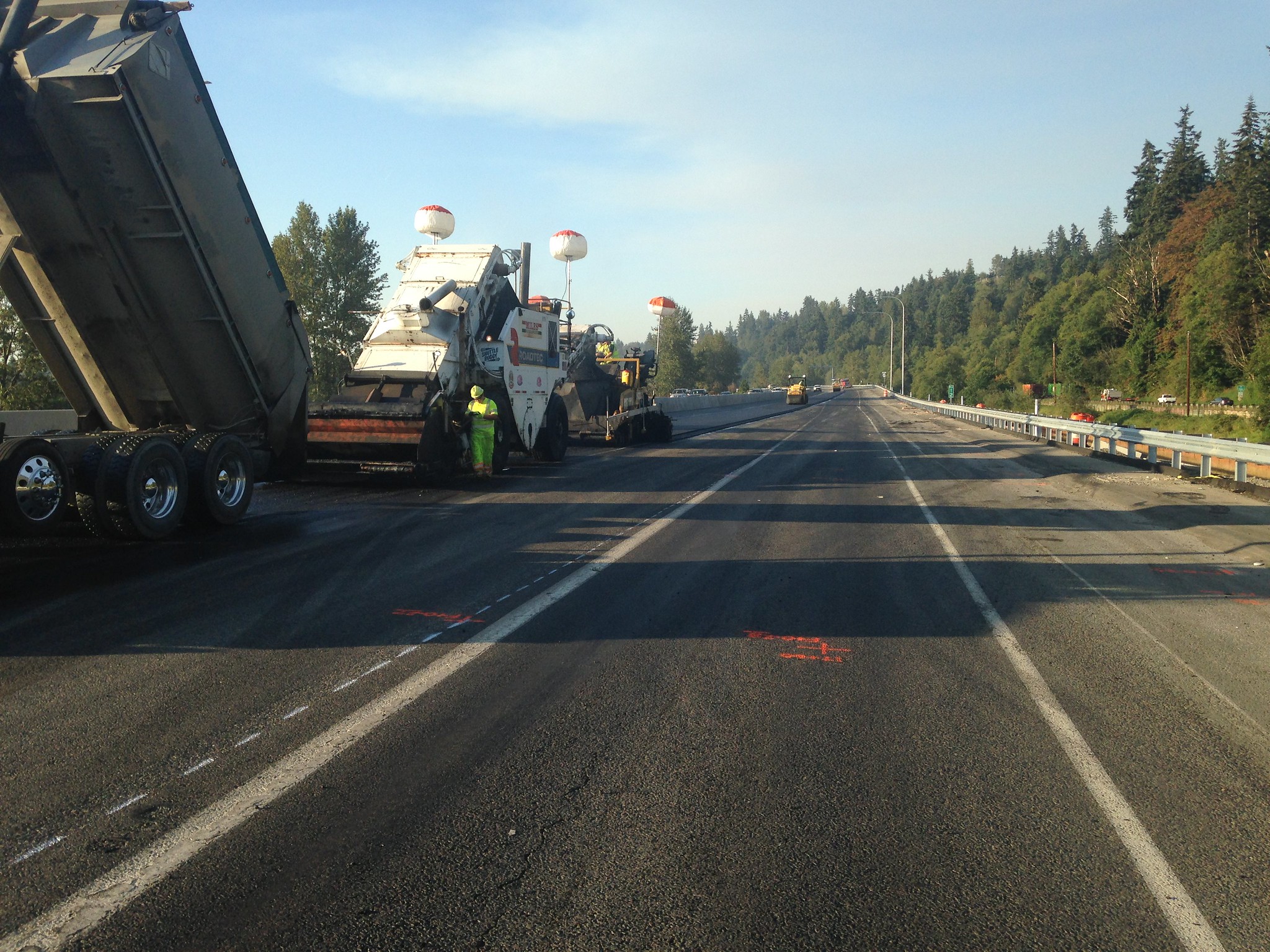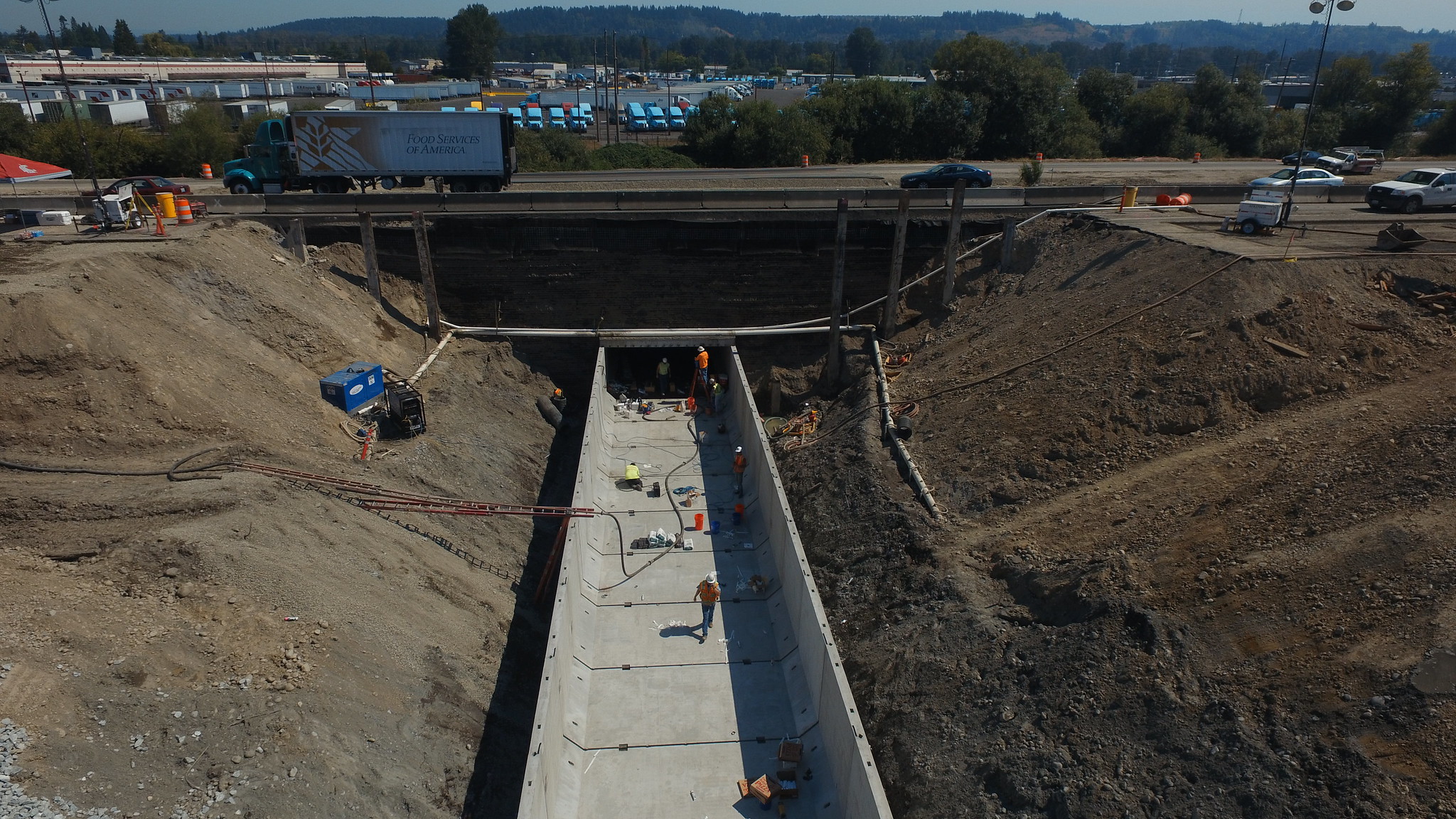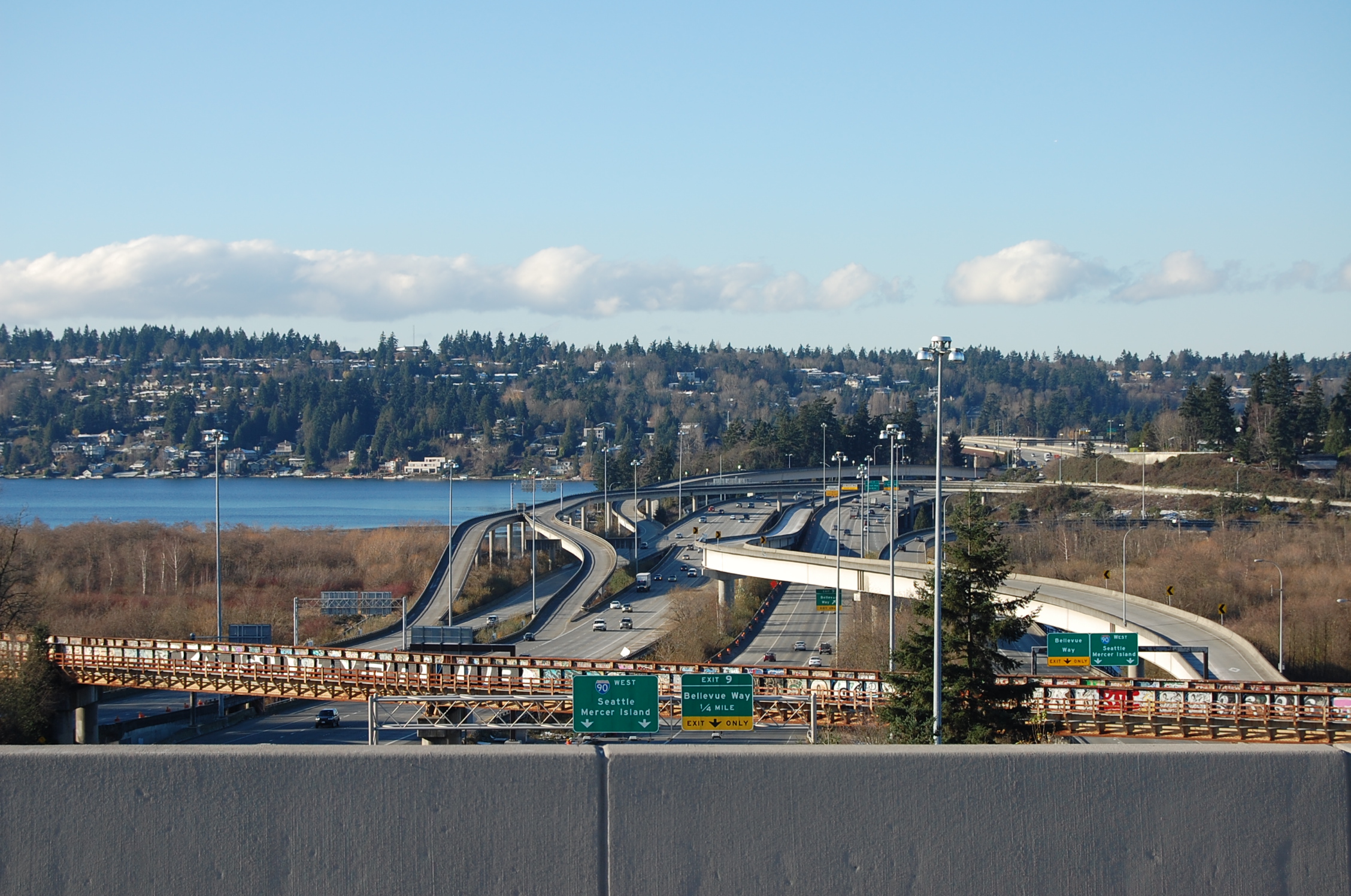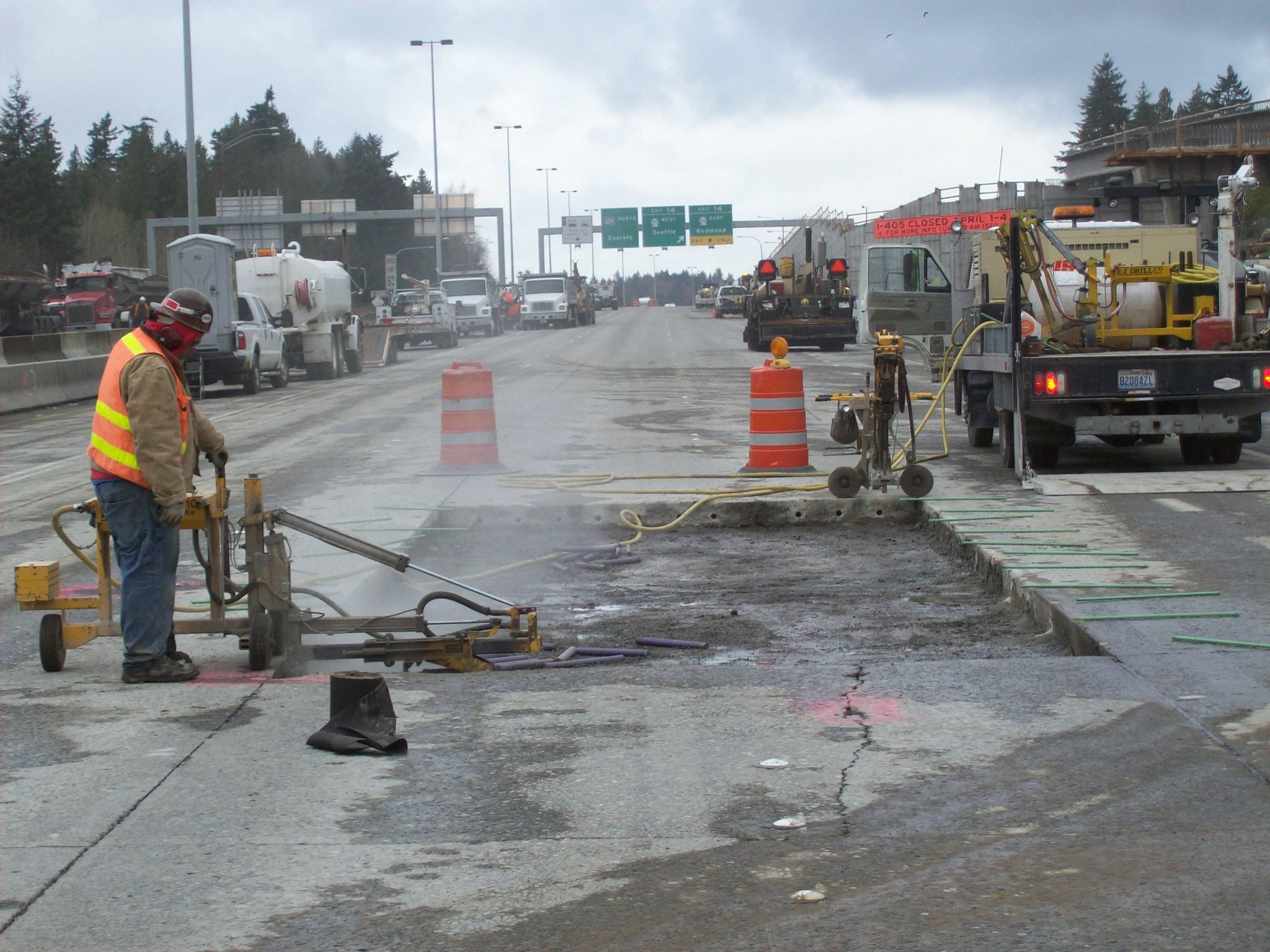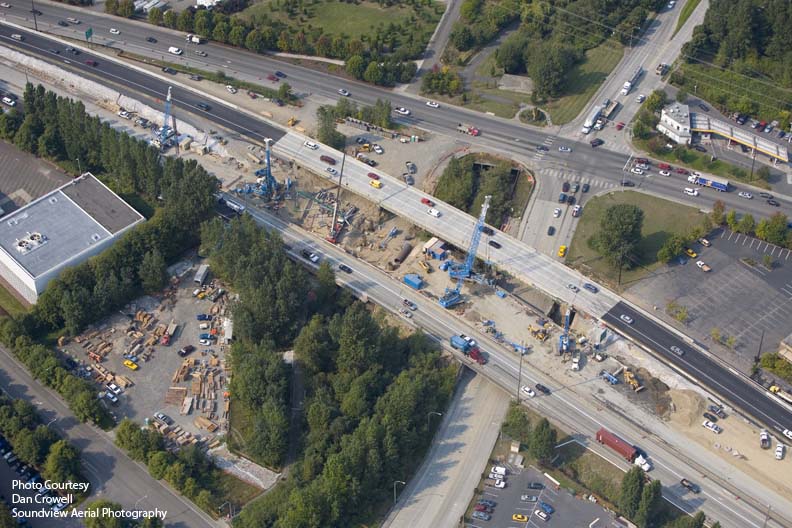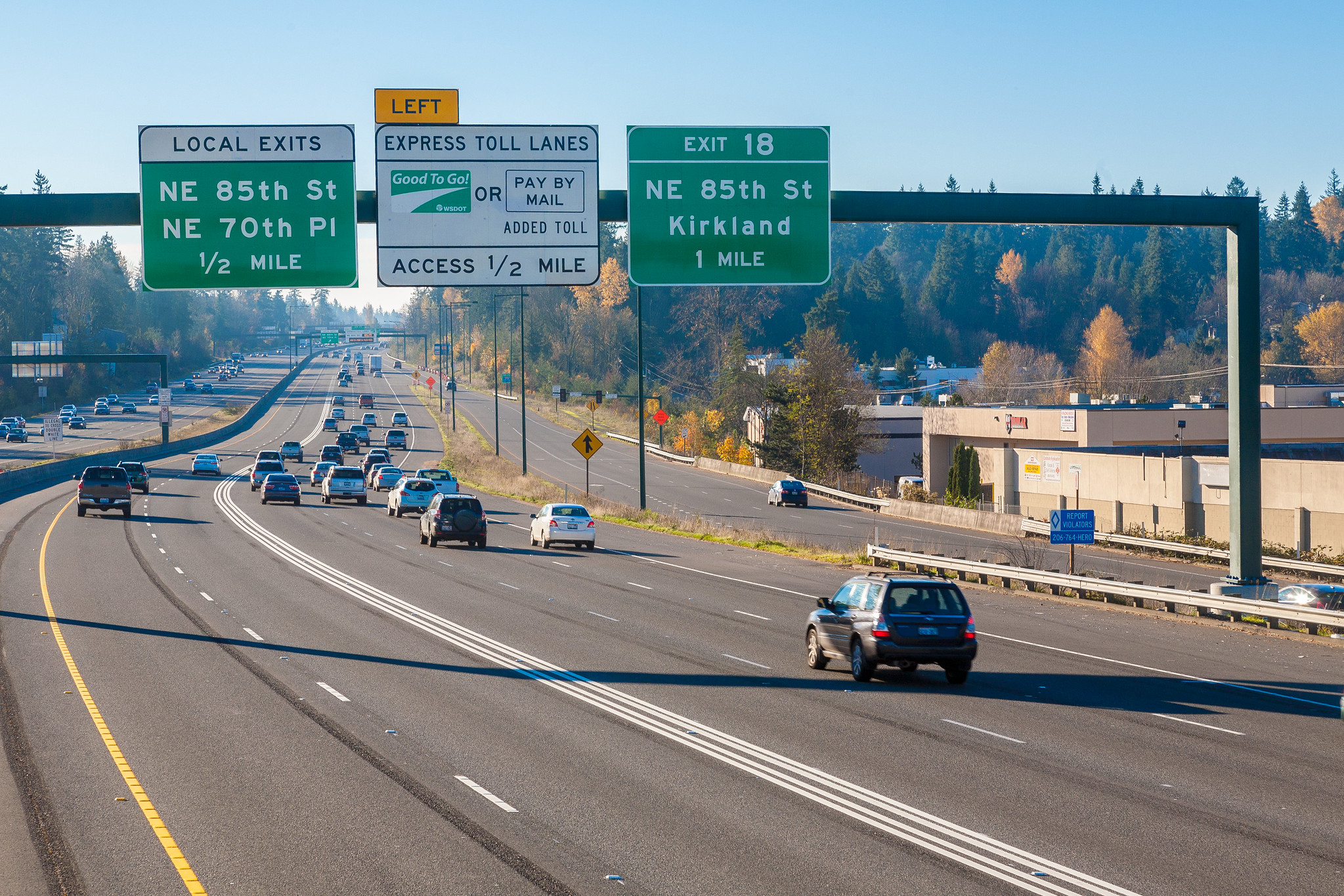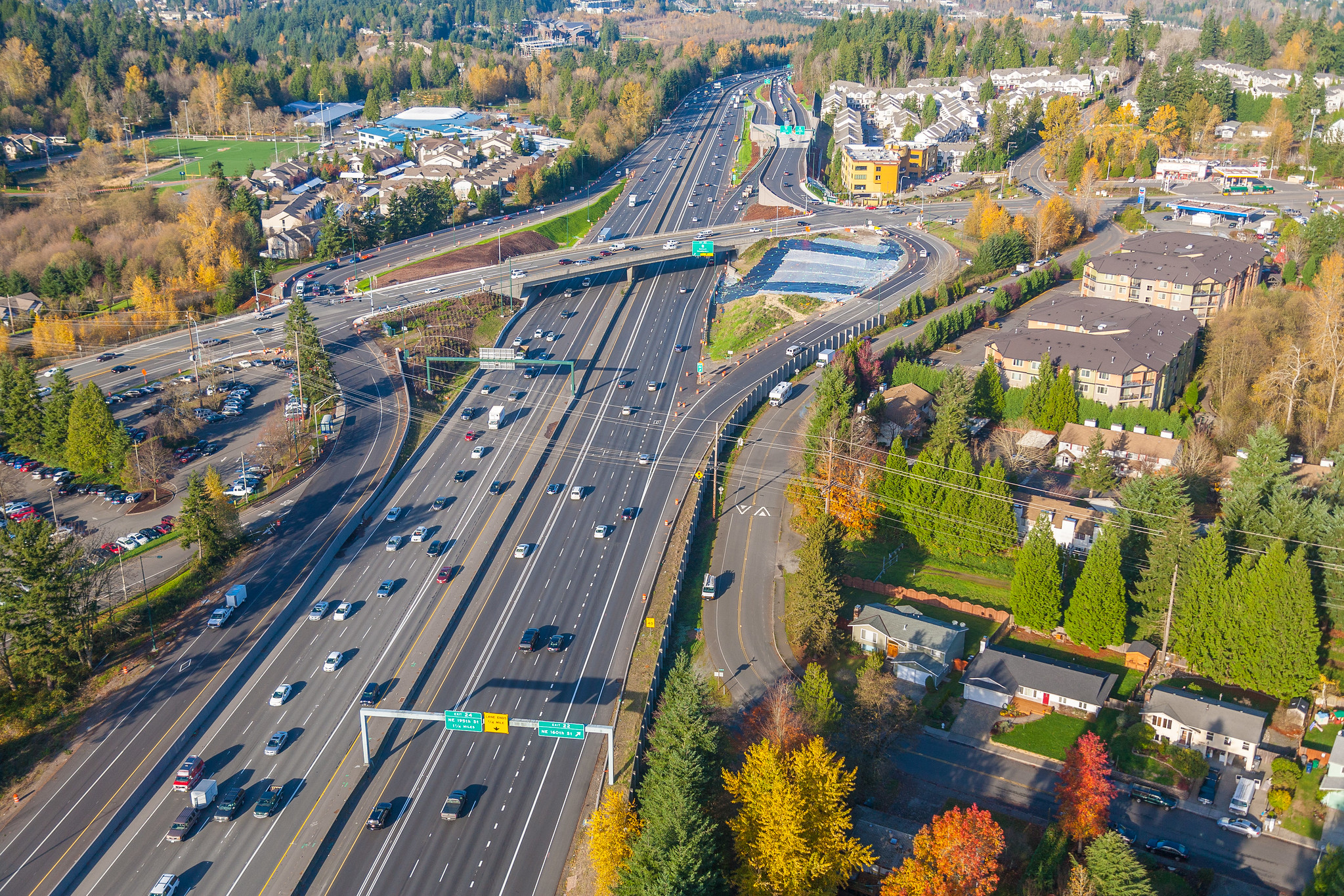A New Way to Build Transportation Capacity
From Vision to Implementation
Together, Interstate 405 (I-405) and State Route 167 (SR 167) serve as the primary link between residential, employment, and warehousing hubs of Seattle’s eastern and southern suburbs. Built in the 1970s, the 50-mile corridor also serves as an alternative to Interstate 5 (I-5) in the event of a major incident or closure. Between the 1970s and 2020, the population of the entire Puget Sound region has more than doubled, and with this growth, commuters and freight trucks have remained the main source of congestion. When addressing the problem of congestion, the short answer could have been to widen the roads. However, to combat the amount of traffic involved in this location, simply widening the roads would have required adding eleven or more lanes in each direction!
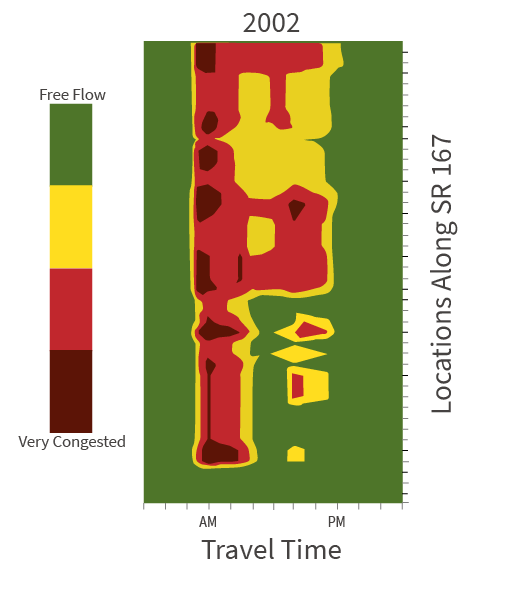
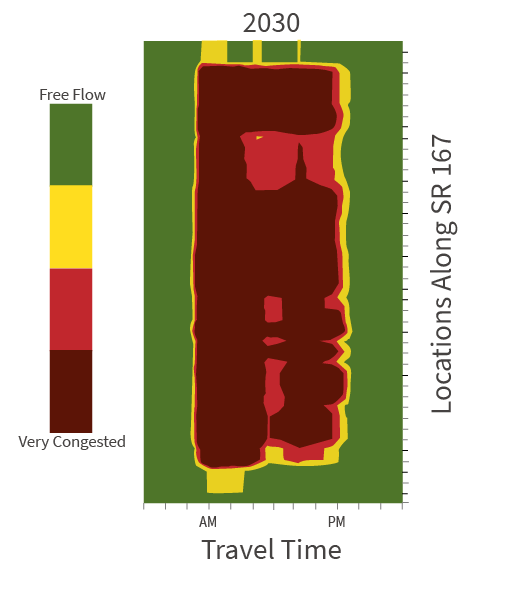
In 2002, the above projection showed that if congestion was not addressed, by 2030 the majority of travelers along SR 167 would experience speeds of <30mph during peak commute hours.
With the realization that building out of congestion simply wasn’t feasible, the Washington State Department of Transportation (WSDOT) began to prepare a master plan for the I-405 corridor. The primary goal was to shift from a strategy of tackling bottlenecks one-at-a-time causing piecemeal projects, to a coordinated effort aimed at improving travel along the entire corridor. A key element of this new approach was a more expansive and holistic set of performance metrics which opened the door for different types of projects to improve travel. This included a full suite of multimodal options and better ways to manage the demand for travel. When the plan was adopted in 2002, it became one of the very first large-scale multimodal projects for WSDOT. Since then, WSDOT and many teaming partners have continued to deliver on the implementation. Twenty years later, WSDOT has undertaken a similar master planning effort for SR 167.
Recipe for Success
Success for this endeavor prevailed from a commitment to a shared vision of the future and a set of guiding principles to measure against. Such a strategy identified which characteristics were most important to allow for a multimodal vision to align investments. This required robust technical analysis along with clear communication about the benefits of the multimodal set of improvement projects. From this launchpad, the I-405 executive committee, city council members, technical committee members, staff from 30+ jurisdictions, four transit agencies, numerous community-based organizations, environmental and tribal groups, worked together to share the vision and implement key parts of the master plan.
This influential coalition enabled a stream of necessary funding for implementation. Perhaps the best vote of confidence can be measured in dollars invested. To date, more than $4 billion has been invested or is targeted for investment in corridor improvements, starting with the Nickel Transportation Investment Package in 2003, the Transportation Partnership Program in 2005, the Connecting Washington Package in 2016 (a portion of the Sound Transit 3 transit program), and most recently, the Move Ahead Washington Package in 2022.
Capacity-Building Improvements
How did this new and holistic planning effort transform how WSDOT and partner agencies added transportation capacity to this growing region? Key accomplishments of the Master Plan (some of which continue to be implemented) included:
Completion of major sections of the Eastrail multipurpose trail. Eastrail runs parallel to I-405 and major segments and crossings of the trail have been implemented through the Master Plan.
Coordinated investments on local arterials to provide better access to the state highway network and new connections for pedestrians and bicycles to reduce the barrier created by the freeway.
New bus rapid transit (BRT) system that leverages the managed lanes. Sound Transit’s Stride BRT system is a key element of the agency’s major $54 billion transit expansion program and is a direct reflection of the Master Plan’s goal of focusing on moving more people rather than solely cars.
Major expansion to transit access by expanding park-and-ride capacity, improving key active mode links to transit, and coordinating with transit agencies to leverage the improvements on the state highway system and connecting city streets.
Continuous set of managed express toll lanes on the I-405/SR 167 corridor. These lanes allow travelers who have high-priority trips to avoid traffic congestion and have a more reliable travel time. One to two additional travel lanes have been added along most of the corridor to make the express toll lanes a reality.
Notably absent from the list is the widening of the freeway to eleven lanes in each direction!
While much has been accomplished, there is still work to do. WSDOT is currently constructing the envisioned set of express toll lanes between Renton and Bellevue on I-405 and finalizing the planning and design to create a similar managed transportation system along SR 167 to the south. These projects will complete the fully managed lane link along the 50-mile corridor. These new efforts continue to implement the original vision from 20 years ago but are also adapting and being refined for today’s demands and what may come in the next 20 years.
The multimodal planning approach pioneered as part of the Master Plan is now fully embedded in many local transportation planning efforts throughout the region and has been serving as a guide for many of WSDOT’s current and upcoming plans and studies. It has been a privilege to work with WSDOT, partner agencies, and the community on the I-405 and SR 167 Master Plans. We look forward to continuing our support to improve transportation for all the communities who use the corridor in the future. To learn more about the project, visit WSDOT I-405/SR 167 Project Site.
Photos Source: WSDOT
If you’re looking to communicate technical work in a way that tells a story to better inform decisions, or if you’re looking to expand your current agenda and build a new vision around it, we can help.


